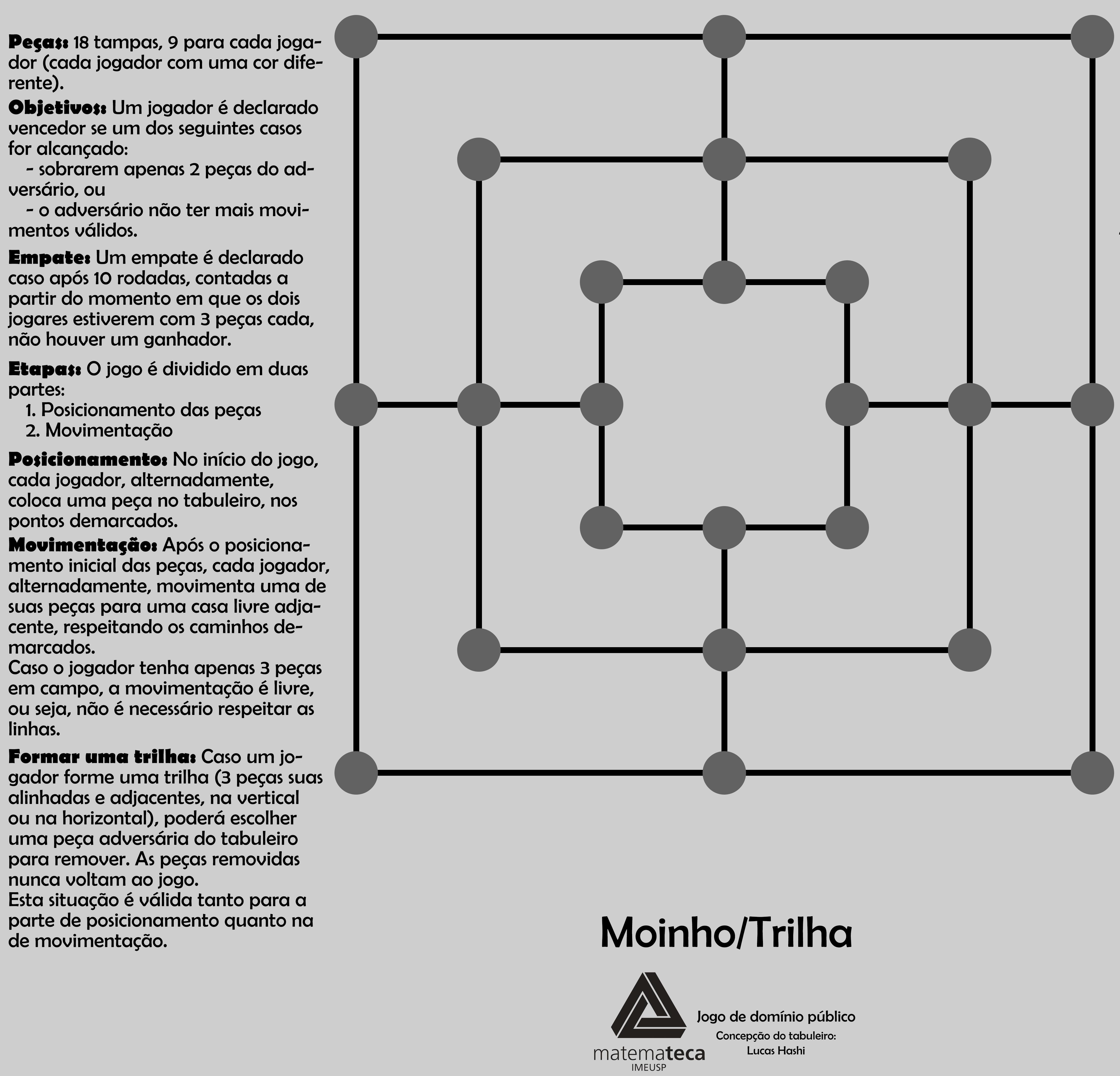BOARD GAMES
The board games below are in the public domain, designed by Lucas Hashi and made in partnership with Matemateca, responsible for making the boards and pieces.
JAGUAR GAME
The Jaguar Game has two players, each assuming the character of either a jaguar or a dog. The latter are intended to encircle the jaguar, leaving it motionless, while the jaguar must eat 6 or more dogs. This is all given on a board like the one in the image below, in which it is possible to understand the movements of each one during the game.

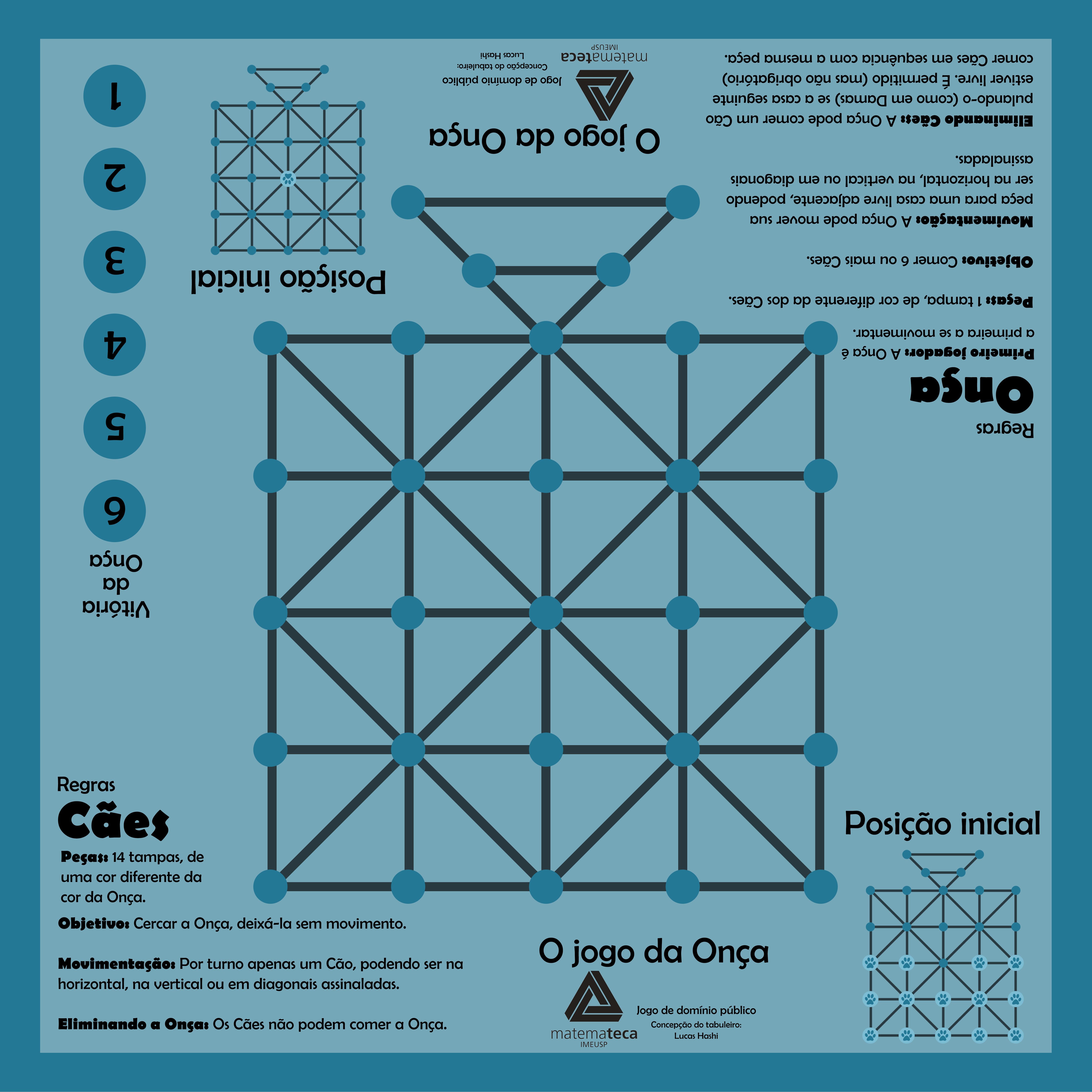
FOX AND GEESE
Fox and Geese also has two players, each taking the role of either a fox or a geese. It is very similar to the previous game, but the fox has to eat the geese until there are three or less. The biggest difference is the shape of the board (see below), which changes the possibilities of moves considerably.
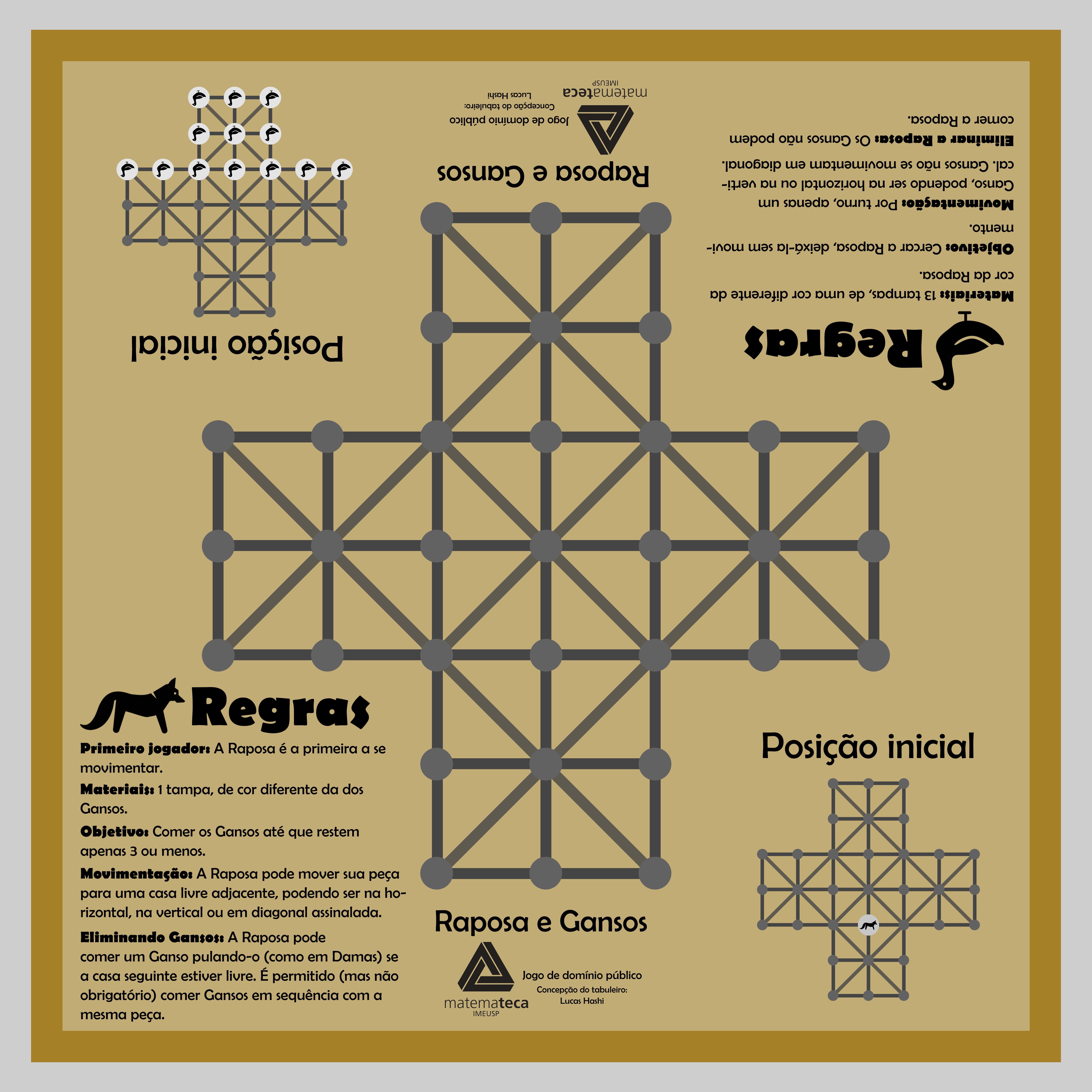
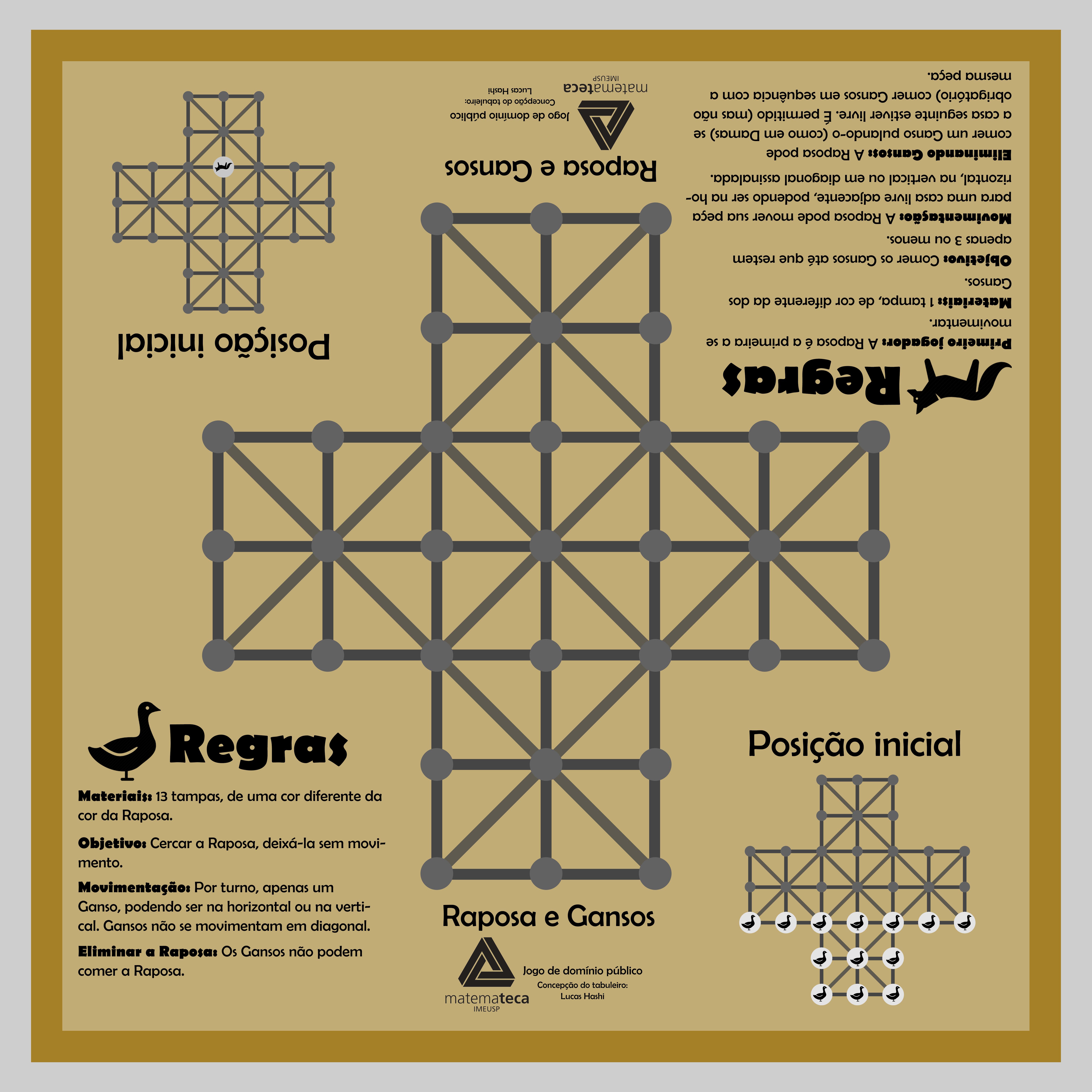
JUNGLE GAME
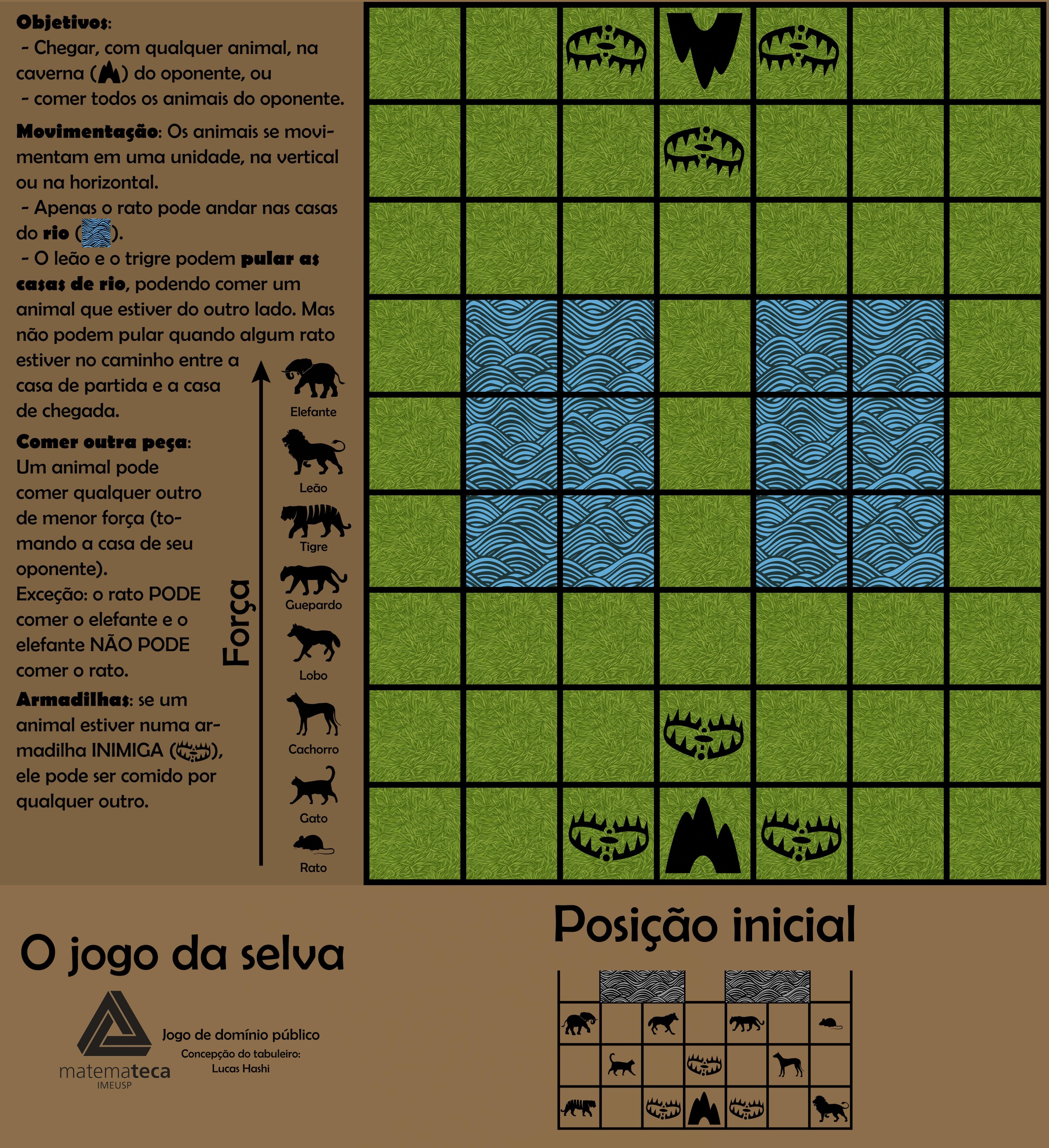
The Jungle Game has two players and eight animal pieces: mouse, cat, dog, wolf, cheetah, tiger, lion and elephant, placed on a strength level scale as shown on the board. An animal can eat any other animal of lesser strength than its own, with the exception of elephants and mice (mice can eat elephants, but the converse is not true).
The goal is to reach the opponent's cave or eliminate all the opponent's animals.
For this, there are several strategies to be made, because some of the animals have their own movements. For example, only the mouse can walk on water, and in addition, it can also prevent another animal from passing through this place while it is there.
There are "special spaces": the water and the traps, where there are some specific rules to follow, all described on the board.
TRACK
This game is also played with two participants, who take turns in two stages: the positioning of the pieces and the movement.
The goal of the game is to make only two pieces of the opponent remain or to make him have no more valid moves possible.
Both in positioning and movement, both described on the board, if a player forms a track, that is, 3 aligned and adjacent pieces, he can choose an opponent's piece to be removed, which does not return to the game under any circumstances.
There is the possibility of a tie in this game, which occurs if there is no winner after 10 moves in which both participants have 3 pieces each.
